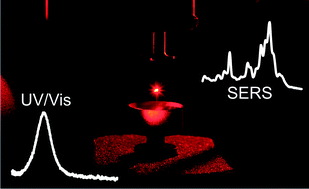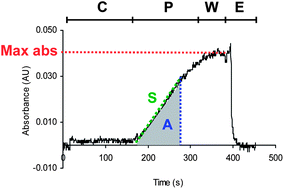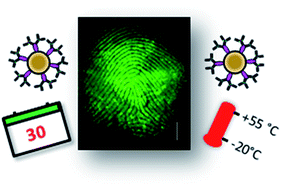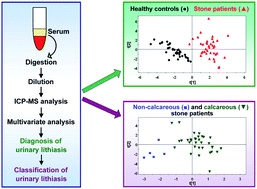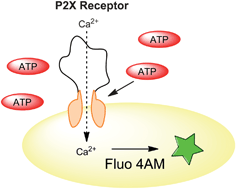Issue 4 of Analytical Methods in now available online.

Schneider et al, Anal. Methods, 2012, 4, 901
On the front cover is an interesting picture from Rudolf Schneider of the BAM Federal Institute for Materials Research and Testing, Germany. Together with colleagues, their paper is on the study of the influence of temperature deviations on assay parameters. They tested parameters such as signal variation coefficients, limit of detection and measurement ranges by testing for two anthropogenic markers, caffeine and carbamazepine, at a variety of temperatures.
Quality assurance in immunoassay performance-temperature effects
Julia Grandke, Ute Resch-Genger, Wolfram Bremser, Leif-Alexander Garbe and Rudolf J. Schneider
Anal. Methods, 2012, 4, 901-905
DOI: 10.1039/C2AY05918E
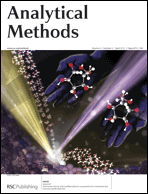
Jang et al., Anal. Methods, 2012, 4, 913
On the inside front cover is some artwork from Jyongsik Jang and colleagues from Seoul National University, Korea. They have fabricated a new type of fluorescent boronic acid-modified polyacrylonitrile (B-PAN) nanoparticle that can be used for an enantioselective monosaccharide sensor. Using a fluorescent polymer nanomaterial for sensors offers advantages, such as low toxicity, environmental safety, diverse functionality, and easy surface modification.
Fluorescent boronic acid-modified polymer nanoparticles for enantioselective monosaccharide detection
Wan-Kyu Oh, Yoon Seon Jeong, Kyung Jin Lee and Jyongsik Jang
Anal. Methods, 2012, 4, 913-918
DOI: 10.1039/C2AY05800F
These articles have been made free to access for 6 weeks so make the most of this and take a look!
This issue also features the following HOT articles:
Separation of dansyl-DL-amino acids by open tubular capillary chromatography based on tube radial distribution phenomenon of the ternary mixed carrier solvents
Yudai Kudo, Hyo Kan, Naoya Jinno, Masahiko Hashimoto and Kazuhiko Tsukagoshi
Anal. Methods, 2012, 4, 906-912
DOI: 10.1039/C2AY05813H
Copper-promoted probe for nitric oxide based on o-phenylenediamine: Large blue-shift in absorption and fluorescence enhancement
Xiaolong Sun, Yufang Xu, Weiping Zhu, Chunsheng He, Lin Xu, Youjun Yang and Xuhong Qian
Anal. Methods, 2012, 4, 919-922
DOI: 10.1039/C2AY25039J
End point detection of precipitation titration by scanometry method without using indicator
Abdolkarim Abbaspour and Abdolreza Khajehzadeh
Anal. Methods, 2012, 4, 923-932
DOI: 10.1039/C2AY05492B
Quantitative monitoring of the progress of organic reactions using multivariate image analysis-thin layer chromatography (MIA-TLC) method
Bahram Hemmateenejad, Morteza Akhond, Zahra Mohammadpour and N. Mobaraki
Anal. Methods, 2012, 4, 933-939
DOI: 10.1039/C2AY25023C
Rapid measurement of antioxidant activity in dark soy sauce by NIR spectroscopy combined with spectral intervals selection and nonlinear regression tools
Qin Ouyang, Jiewen Zhao, Quansheng Chen, Hao Lin and Zongbao Sun
Anal. Methods, 2012, 4, 940-946
DOI: 10.1039/C2AY05766B


